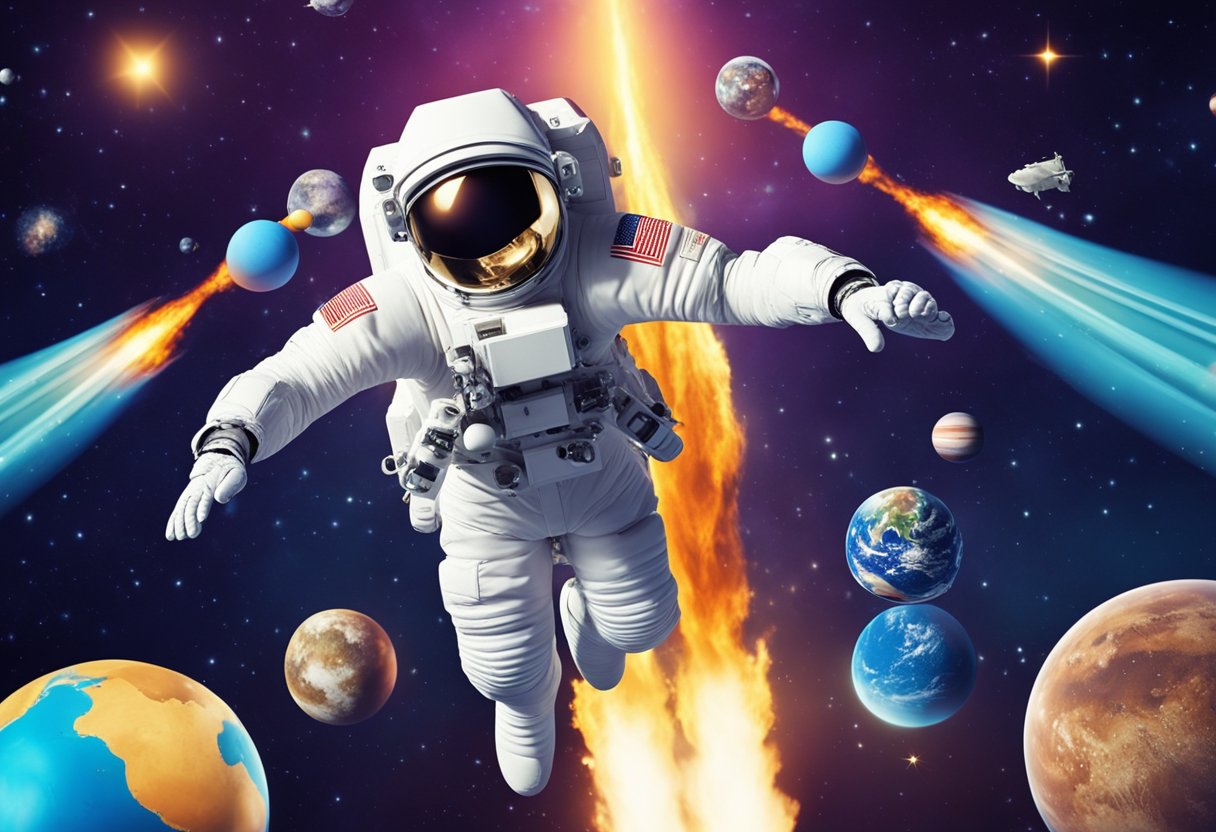
Fun Astronaut Facts – Exploring the cosmos has always sparked the imagination of both young and old. As children look to the stars with wonder, astronauts are the bold men and women who make those starry dreams a reality. They embark on extraordinary voyages to outer space, floating in zero gravity and witnessing sights that few on Earth have seen. In this article, we’ll share some thrilling facts about these space explorers that will inspire and educate children about the fascinating world of astronauts.
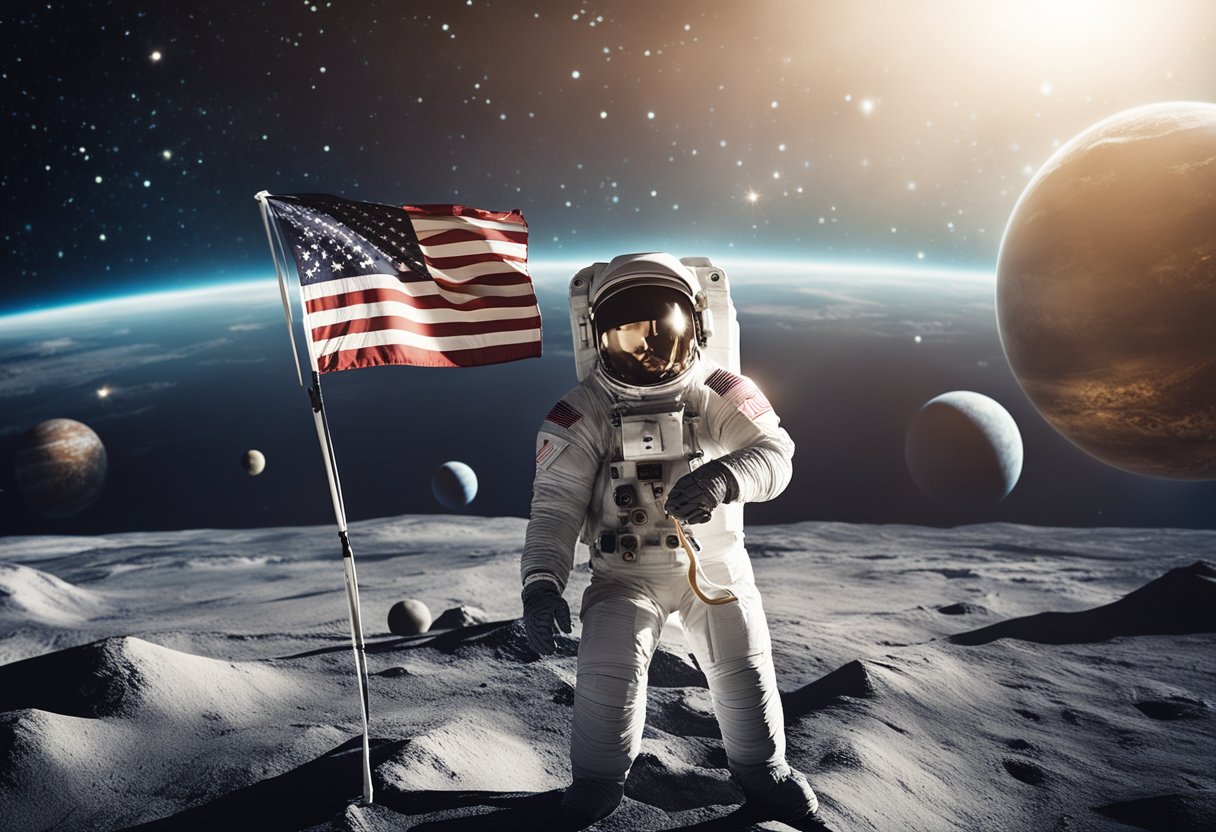
From the historic achievements that have shaped our understanding of space to the intricate roles and responsibilities of an astronaut, there’s a universe of knowledge to uncover. Understanding what life is like in orbit, the technologies inside a spacecraft, or the intricacies of space missions can spark a lifelong interest in science and exploration. Space travel not only pushes the boundaries of human achievement but also continues to have a profound impact on society, from advancements in technology to inspiring future generations.
As space enthusiasts, we understand an astronaut to be a highly trained professional who travels beyond Earth’s atmosphere. These skilled individuals undertake daring space missions and conduct scientific research in microgravity.
To become an astronaut, one must often possess a strong educational background in engineering, biological science, physical science, or mathematics. Requirements also typically include:
Military or piloting experience is also highly valued, although not mandatory for all space agencies.
Once selected, astronauts undergo intensive training that includes:
This rigorous preparation ensures they are ready for the physical and mental demands of their missions.
In this section, we explore the trailblazing milestones achieved by the intrepid men and women who ventured into the cosmos. Their courage and determination paved the way for future generations of adventurers.
Through these incredible journeys, astronauts from the Soviet Union, the United States, and France, aboard spacecraft like Soyuz and Apollo, have expanded our knowledge and inspired us to dream of reaching the stars. Today’s space travel efforts are not just government-led; for example, SpaceVoyageVentures.com explores innovative space tourism opportunities that may soon become reality.
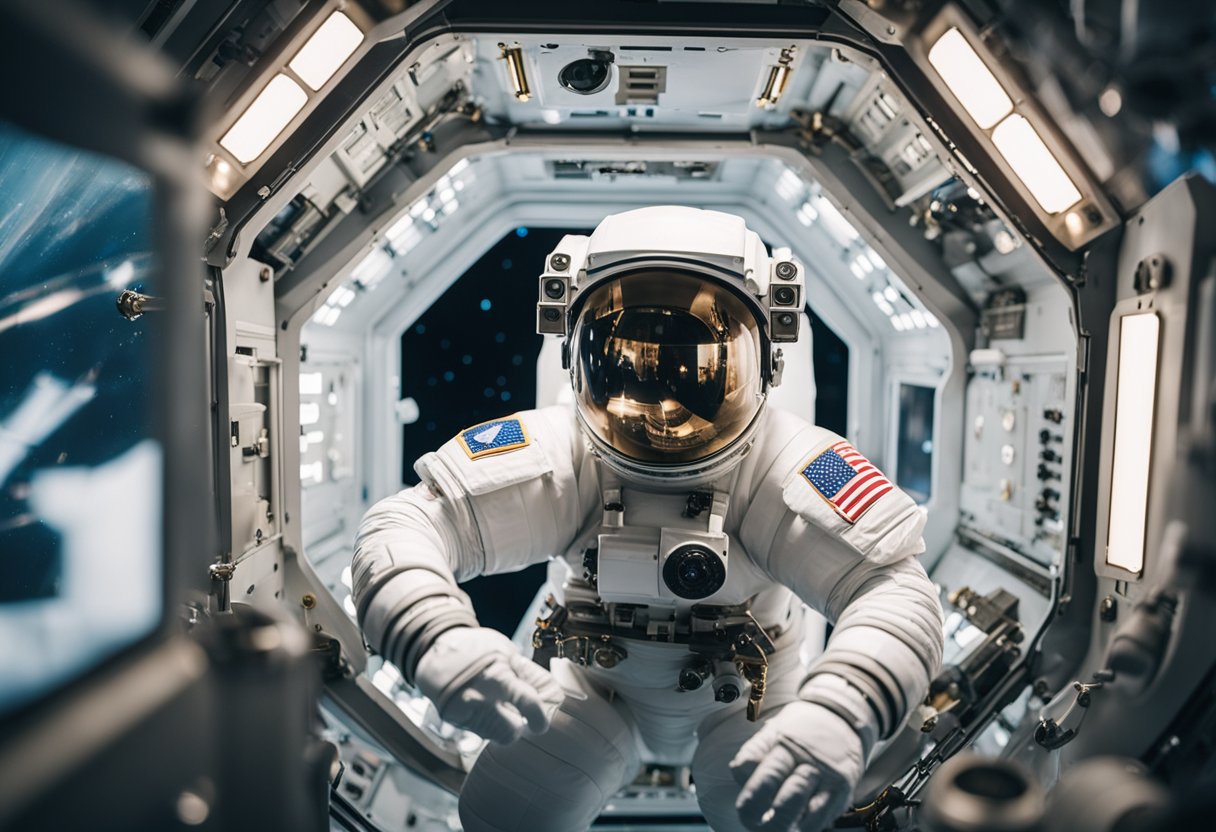
Living on board a spacecraft in orbit around Earth presents astronauts with an extraordinary environment where they experience the wonders of weightlessness and the unique challenges of living outside our planet’s atmosphere.
In orbit, we find ourselves in a state of continual free-fall towards Earth, resulting in the sensation of weightlessness. This allows us to float effortlessly inside the spacecraft, a thrilling experience that requires us to adapt how we move, sleep, and carry out daily activities. In this microgravity environment, our bodies undergo several changes, such as stretching by up to two inches due to the absence of gravity compressing the spine.
Stepping out into the vastness of outer space is known as a spacewalk or EVA (Extravehicular Activity). During these missions, astronauts leave the safety of their spacecraft to conduct repairs, test new equipment, or perform scientific experiments. Spacewalks are meticulously planned and involve wearing a special suit to protect us from the harsh conditions of space such as extreme temperatures, micrometeoroids, and the vacuum of space. They give us the opportunity to see Earth from a unique vantage point, against the backdrop of the cosmos.
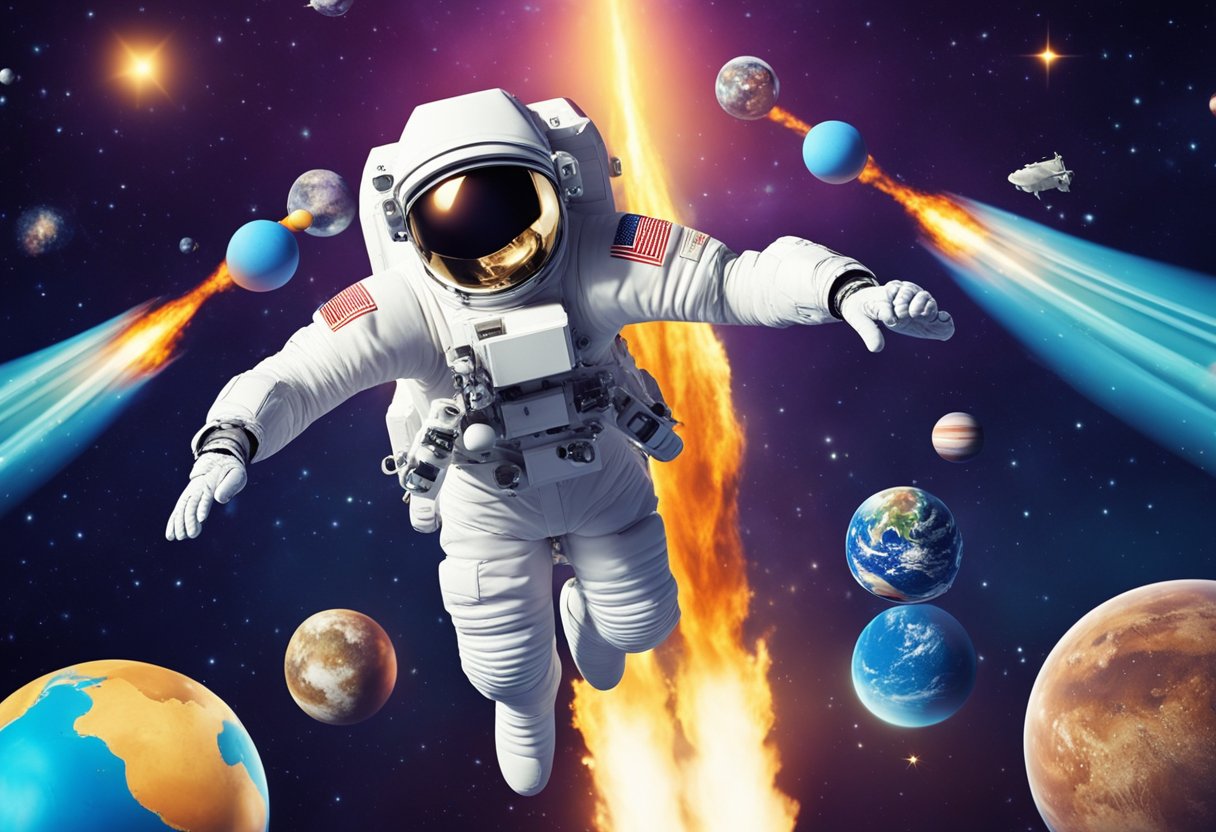
In our journey through the cosmos, space missions have taken us beyond the boundaries of our Earth, allowing us to explore distant planets and our own Moon. Our collective efforts have expanded human presence into the solar system and deepened our understanding of the universe.
Spaceflight has long fascinated us, not just for the adventure, but for the significant strides it involves in science and exploration. The Apollo missions of the 1960s and 1970s marked an era where we first set foot on the Moon. Most notably, the Apollo 13 mission, which, despite being a successful failure, showcased our resolve in the face of adversity. Our voyages haven’t stopped at the Moon; unmanned missions have pushed further to other planets within our solar system, including our intriguing neighbour, Mars, stirring our curiosity and our ambition for future manned missions to the Red Planet.
We launched the Space Shuttle era in the early 1980s, which witnessed over 130 missions and became a symbol of human achievement in space. This fleet of reusable spacecraft not only made access to space more frequent but allowed for the construction and servicing of the International Space Station, and the deployment and repair of vital satellites. Now, as we move forward, companies like SpaceVoyageVentures.com offer a glimpse into the potential future of space tourism, aiming to make the wonders of space accessible to more of us.
Before we delve into the specific subsection, it’s pivotal to understand that science and research conducted in space offer unparalleled opportunities for discovery. The unique conditions of space allow astronauts to perform experiments that would be impossible on Earth.
In the microgravity environment of the International Space Station (ISS), we, as scientists and researchers, are afforded a unique laboratory setting. Experiments can explore phenomena without the interference of Earth’s gravity, leading to new insights in various scientific fields.
Biology and Human Biology: The effects of microgravity on living organisms, including humans, are a primary area of study. We’ve found that muscles and bones can weaken in space, and ongoing research seeks to mitigate these effects.
Physics: Space provides an excellent stage for discovering fundamental physics principles without Earth’s gravity. Investigations into fluid dynamics and combustion are particularly revealing.
Material Science: The development of new materials is an exciting avenue of space research. We often use the ISS to test materials that could withstand the extreme conditions of space travel or improve life on Earth.
Technology: Advancements in technology, driven by the need for more robust and reliable systems for space exploration, benefit our daily lives. For example, satellite technology has improved communication and even plays a part in weather forecasting.
Astronomy and Solar Research: The absence of atmospheric distortion aboard the ISS enables clearer observations of the sun and the wider cosmos. Our understanding of the sun’s impact on Earth has been significantly advanced by these observations.
Our pursuit of scientific knowledge in the void of space is propelled by the ceaseless curiosity and tireless work of astronauts and researchers. Each experiment conducted not only improves technology and lifestyle back on Earth but is also a stepping stone for the future of human space exploration, as documented on platforms like SpaceVoyageVentures.com.
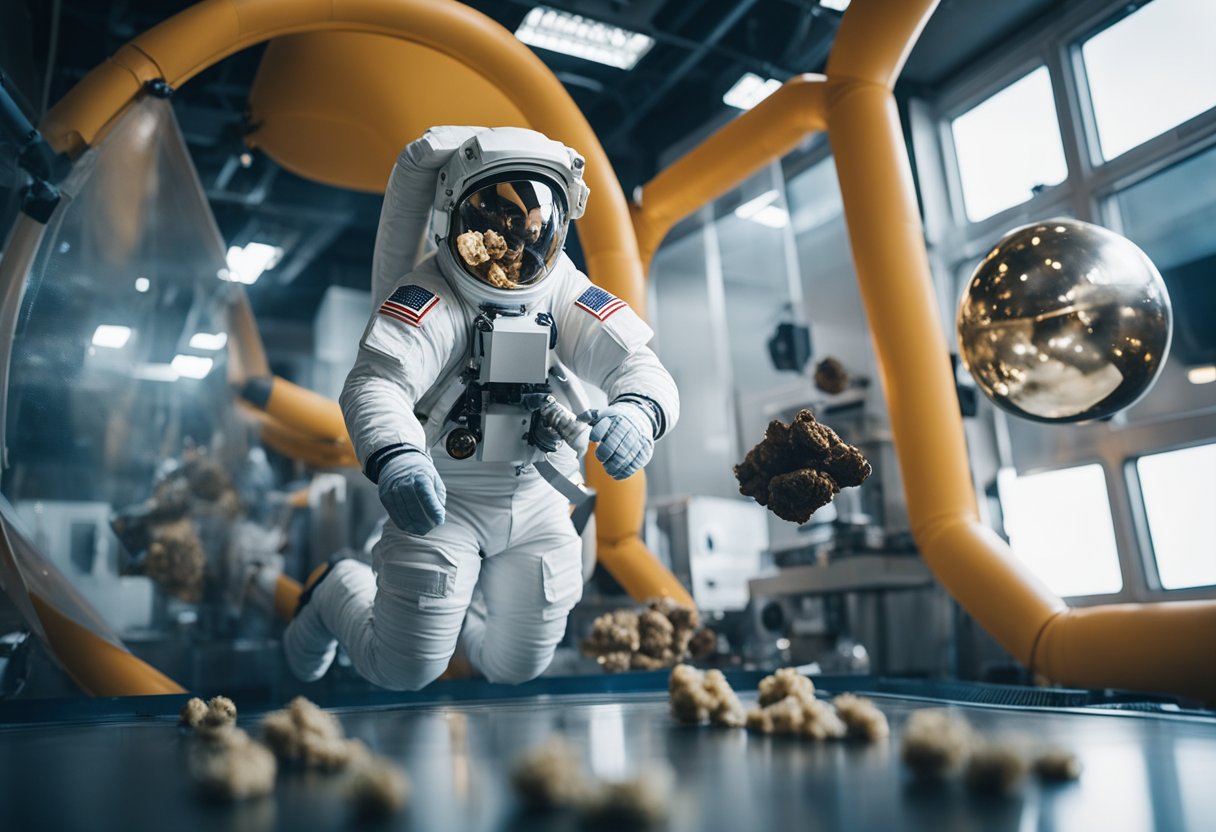
Living in space presents a unique set of routines for astronauts compared to life on our planet. We shall dive into the specifics of their daily life from the moment they wake until they rest for the night in microgravity—each activity tailored to preserve physical health and promote mental well-being in an environment where space, time, and air are precious.
Morning Routines:
Our astronauts begin their day with a wake-up call, which often comes in the form of music piped into the spacecraft. In the absence of natural light cycles, this helps distinguish night from day. Breakfast is their first task, with food coming from carefully sealed packages to prevent crumbs in the zero-gravity environment.
Work and Research:
The bulk of an astronaut’s day is dedicated to work, which includes conducting scientific experiments, maintenance of the spacecraft, and exercise. Exercise is crucial to maintain physical health, combatting the muscle atrophy and bone density loss caused by long-term weightlessness.
Meal Times and Nutritional Care:
Mealtimes are vital for nutrition and relaxation. Lunch and dinner are similar to breakfast, with meals designed to provide a balanced diet and the necessary nourishment.
Evening Routine and Rest:
After a busy day, evenings are a time for astronauts to unwind with leisure activities such as reading or watching films. They sleep in sleeping bags attached to the wall or ceiling to keep from floating around.
Remembering that our planet is the bright blue marble seen from a window can also be incredibly grounding. From their unique vantage point, astronauts experience an average of 16 sunrises and sunsets each day, necessitating artificial cues to regulate their sleep cycles. Rest is as much a planned part of the day as any other task, designed to ensure astronauts can operate at their best in the challenging space environment.
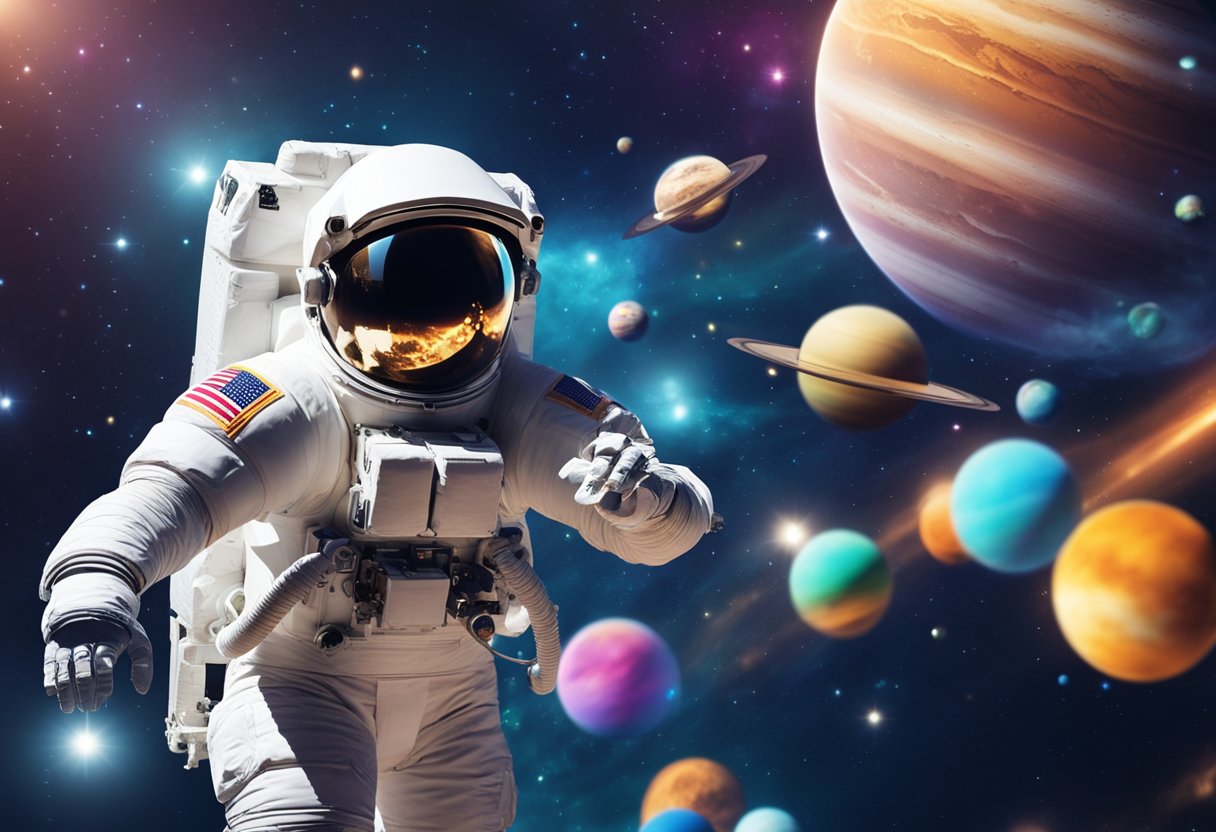
Before we delve into the intricacies of spacecraft technology, it’s important to understand that engineering for space travel involves cutting-edge technology and resources designed to withstand the challenges of the cosmos.
When we talk about spacecraft engineering, we’re referring to the innovative designs and technologies that allow spacecraft to operate in the harsh environment of space. This includes the Apollo missions, which leveraged robust technology to transport astronauts to the Moon. Each spacecraft comprises a myriad of systems, all meticulously designed for efficiency and safety.
For example, spacesuits are marvels of technology, serving as personal spacecraft that maintain life support for astronauts during spacewalks or on other planetary surfaces. They provide oxygen, temperature control, and are made of multiple layers to protect against micrometeoroids.
The pursuit of space tourism presents new challenges for spacecraft technology. Companies on the frontier of this industry, like SpaceVoyageVentures.com, document the evolution of spacecraft from purely scientific vessels to those that may soon carry tourists beyond our atmosphere. They look at the technological requirements for these crafts to be safe and viable for public travel.
We must also consider the resources required for sustained space travel. Advanced propulsion systems, life support, and energy generation technologies are being developed to extend our reach in space. For instance, solar panels used on spacecraft are much more efficient than those on Earth, as they harness direct sunlight without atmospheric dilution.
In summary, spacecraft technology is a testament to human ingenuity, transforming how we interact with space and opening up new possibilities for exploration and perhaps even space tourism.
When considering the roles and responsibilities of astronauts, it’s essential to understand the various positions they may hold and how each contributes to the success of a space mission. These roles are critical in ensuring that space missions are carried out efficiently and safely.
Pilots and commanders are vital roles within any space mission. Pilots are typically responsible for manoeuvring the spacecraft during launch, landing, and when docking with space stations. They must possess significant knowledge of the spacecraft’s systems and be prepared to handle any unforeseen events. Commanders, on the other hand, have the overall responsibility for the success of the mission, the crew’s safety, and the vehicle’s operation. Their leadership is crucial in maintaining team dynamics.
Mission specialists have specific expertise in areas such as science, medicine, engineering, or technology. On board the spacecraft, they conduct experiments, manage payloads, or repair equipment. They are integral to the mission’s objective and often have the opportunity to engage in extravehicular activities (EVAs) or spacewalks.
The concept of teamwork in space cannot be overstated. It requires each member to fulfil their responsibilities while supporting one another. Opportunities to work as a cohesive unit are plentiful, and the experiences gained are unique to the extreme environment of space.
Our astronauts train rigorously to ensure their readiness for the challenges and responsibilities of space travel. While our current missions are focused on exploration and research, we at SpaceVoyageVentures.com are excited about the emerging era of space tourism, where the responsibilities of an astronaut could expand to include ensuring the safety and satisfaction of tourists on off-planet adventures.
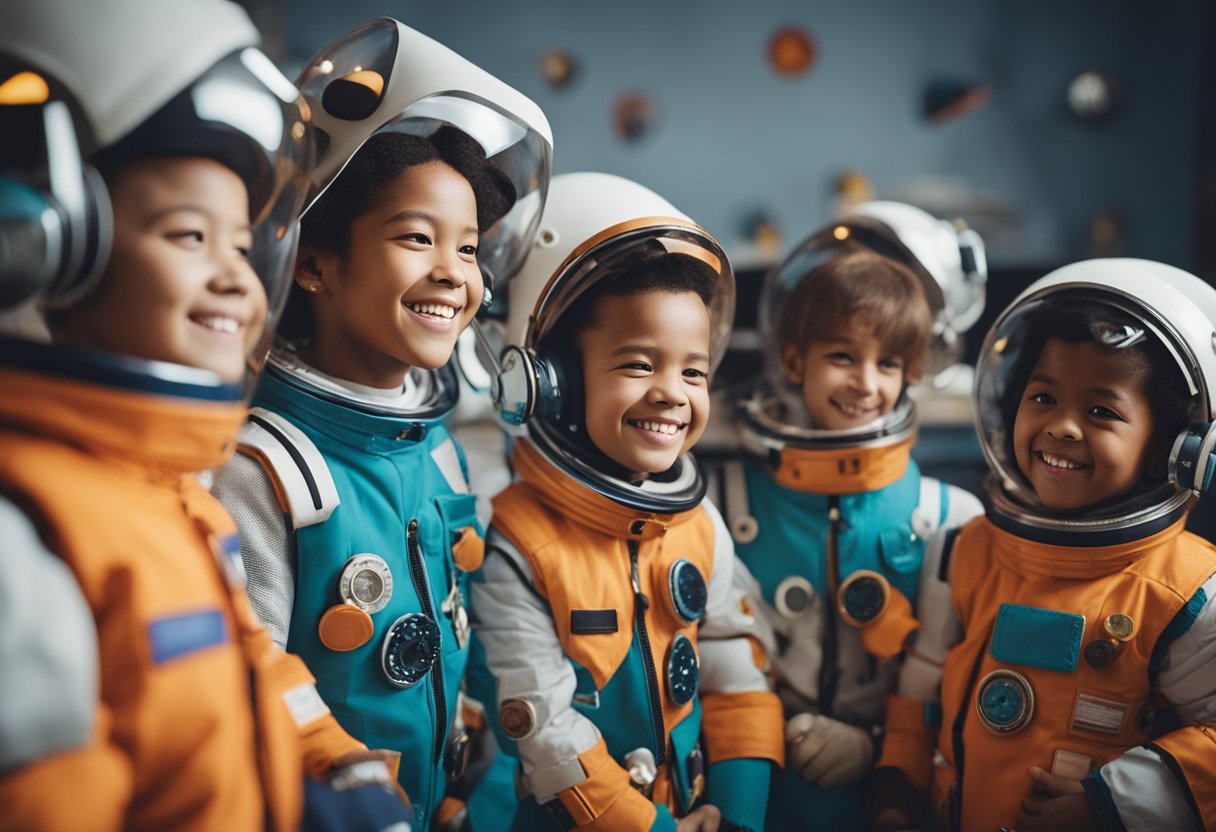
In this section, we explore the profound influence that space exploration has had outside its scientific and technological boundaries, specifically on popular culture and education.
Popular Culture: Space exploration has significantly permeated American cultural history, captivating the imagination of millions. From the iconic words of Neil Armstrong upon setting foot on the lunar surface to the countless space-themed films and books, astronauts have been a recurring motif in entertainment. In a remarkable act blending space exploration with sports, astronaut Alan Shepard famously hit a golf ball on the Moon during the Apollo 14 mission. This event uniquely showcased the lighter side of space missions and remains a memorable moment in pop culture.
Educational Outreach: The fascination with astronauts has been harnessed for educational outreach, with organisations and initiatives aimed at igniting a passion for STEM subjects amongst students. Television programs dedicated to space, such as the ones chronicling the Apollo missions, have brought the excitement of space travel into classrooms and living rooms, inspiring future generations of scientists and engineers. Our new frontier in space education involves online platforms like SpaceVoyageVentures.com, which aims to enlighten both the young and old about the burgeoning sector of space tourism.
Space exploration continues to be a powerful tool for education, providing practical applications of physics and mathematics, and fostering an environment of inquiry and discovery.
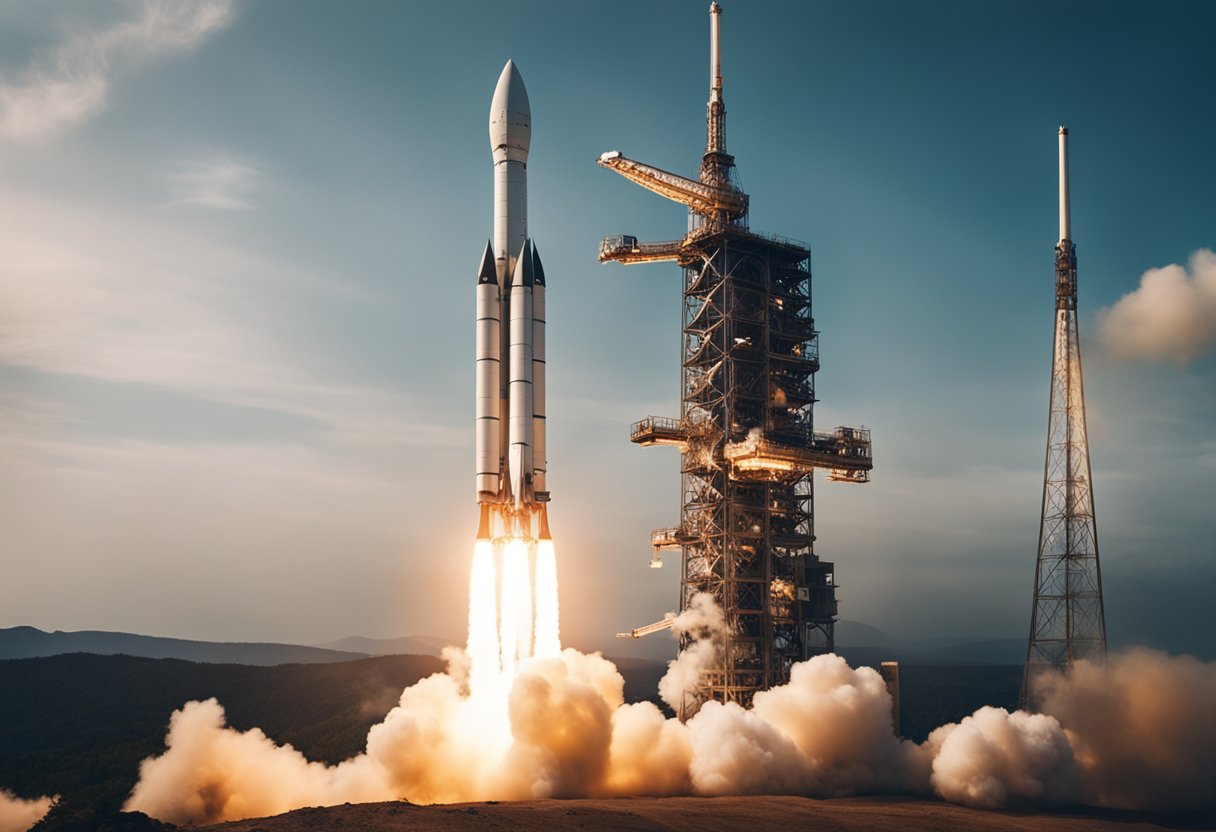
As we venture further into the 21st century, the scope of space exploration is broadening with ambitious projects that promise to redefine humanity’s presence beyond Earth.
NASA and international partnerships are crucial in forging the path to new celestial bodies. Our collective endeavours now aim to establish a sustainable human presence on the Moon, which serves as a stepping stone for the more daunting challenge of Mars colonisation. The Artemis program, led by NASA, symbolises our commitment to return humans to the lunar surface and construct a moon base that will enable long-term exploration.
Our plans for Mars are marked by a sequence of robotic missions that will pave the way for human exploration. The notion of establishing a thriving colony on the Martian surface is no longer relegated to science fiction. Russian cosmonauts and astronauts from around the globe are preparing for the physiological and psychological demands of interplanetary travel.
The concept of asteroid mining is also on our radar. It has the potential to provide us with the resources needed for deep space missions and could turn asteroids into refuelling stations for spacecraft.
Adapting space policy to accommodate the growing interest in space is paramount. We understand that ensuring safety and cooperation in space activities requires updating and establishing frameworks that support peaceful and sustainable exploration efforts.
The nascent field of space tourism is becoming tangible, with SpaceVoyageVentures.com chronicling the latest developments. Here, we witness the blending of exploration with enterprise, as early trips are documented and the promise of future experiences is shared with eager audiences.
By articulating these goals and acknowledging the challenges ahead, we stand on the precipice of a new era. Our vision extends beyond mere footprints and flag plantings to one where humanity’s future includes thriving off-world communities and a robust interplanetary economy.
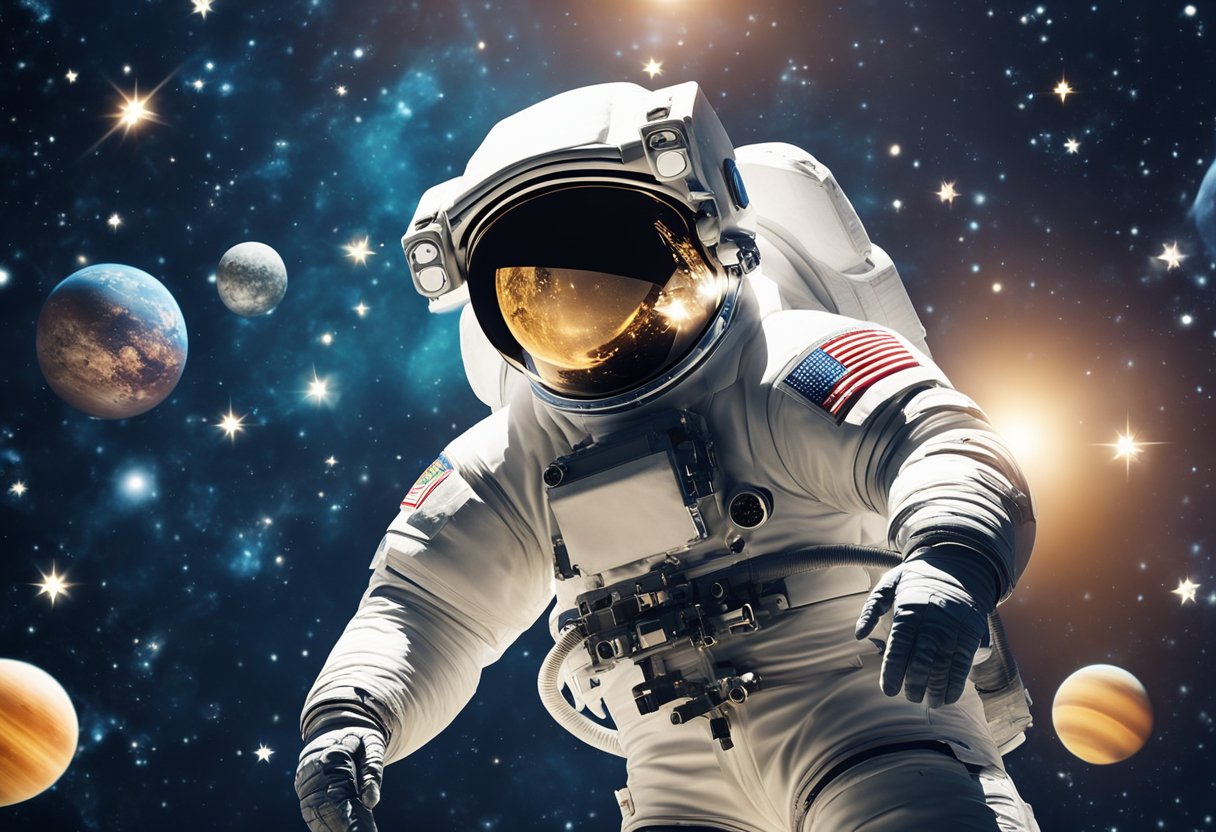
In this section, we’ll answer some engaging queries kids often have about astronauts and their missions in space.
Astronauts are trained to do various tasks in space, including conducting scientific experiments, repairing satellites, and occasionally venturing outside their spacecraft on spacewalks to carry out maintenance on the International Space Station (ISS).
Inside the International Space Station, astronauts follow a strict schedule comprising scientific research, exercise, and maintenance of the station’s equipment. They live in a weightless environment, sleeping in tethered sleeping bags, eating specially prepared food, and using suction devices for personal hygiene.
For those dreaming to become an astronaut, the journey involves extensive education and experience. It typically requires a strong background in STEM subjects – science, technology, engineering, and mathematics – along with significant professional experience or piloting skills, followed by rigorous astronaut candidate training.
One intriguing aspect of space travel is experiencing microgravity, which allows astronauts to float in their spacecraft. Another is the chance to witness the Earth from space, offering a unique perspective and appreciation for our planet.
Astronauts play a vital role in scientific research by conducting experiments that can only be carried out in the microgravity environment of space. These studies range from medical research to understanding the implications of long-term space travel on the human body.
Zero gravity, or microgravity, can have several effects on an astronaut’s body, including loss of bone density and muscle mass. It’s also known that astronauts can grow up to two inches taller while in space as the lack of gravity allows the spine to expand.